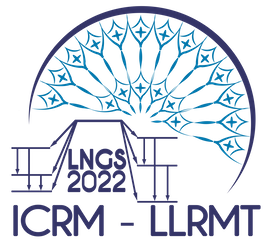Speakers
Description
The detection of 210Pb levels in aquatic environments evokes interest in various scientific studies. Its precise determination is important not only for the radiological assessment of drinking waters but also, 210Pb and 210Po distribution in the marine environment are significant for the assessment of the removal rates of particles from the ocean and particle fluxes during transport along the coast, as well as particulate organic carbon export in the upper ocean.
Measurement techniques for 210Pb determination, gamma spectrometry, alpha spectrometry, or liquid scintillation counting (LSC), are either time-consuming or demand expensive equipment or complicated chemical pre-treatments. However, one other possibility is to measure 210Pb on an LS counter if it is in equilibrium with its progeny 210Bi - through the Cherenkov counting method. It is unaffected by the chemical quenching and assumes easy sample preparation but has the drawback of lower counting efficiencies than standard LSC methods, typically from 10% up to 20%. The aim of the presented research in this paper is to investigate the possible increment of detection efficiency of Cherenkov counting during 210Pb/210Bi detection on an LS counter Quantulus 1220. Recent reports have demonstrated that certain ionic liquids can act as wavelength shifters, thus the performance of several newly synthesized ionic liquids was tested during Cherenkov counting. Considering naturally low levels of 210Pb in aqueous samples, the addition of ionic liquids to the counting vials with the analyzed samples has the benefit of detection limit’s decrement during 210Pb quantification.
Our results demonstrated that ionic liquid, 1-butyl-3-methylimidazolium salicylate, is more efficient in Cherenkov counting efficiency increment than the previously explored 2-hydroxypropan-1-amminium salicylate. Consequently, the impact of a few other ionic liquids that were synthesized with the same cation group (1-butyl-3-methylimidazolium benzoate, 1-butyl-3-methylimidazolium 3-hydroxybenzoate, and 1-butyl-3-methylimidazolium 4-hydroxybenzoate) was explored in order to test their potential influence on Cherenkov counting efficiency. It was confirmed that, among the explored ones, only ionic liquids in the form of salicylates exhibit a wavelength shifting effect. Namely, the addition of small amounts (around 0.8 g) of 1-butyl-3-methylimidazolium salicylate increases the detection efficiency from 16% to >70%, consequently reducing the detection threshold more than four times. Moreover, the addition of ionic liquids could find application in the quantification of other radionuclides besides 210Pb/210Bi via the Cherenkov counting method.

